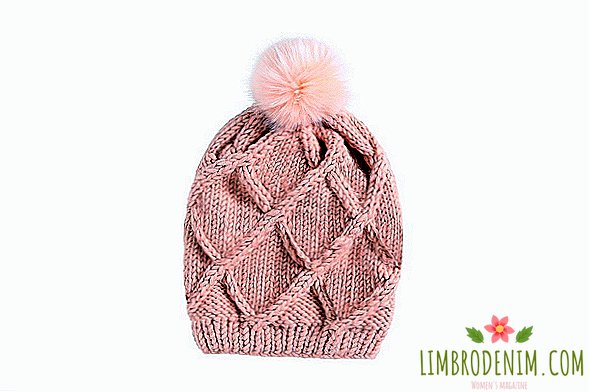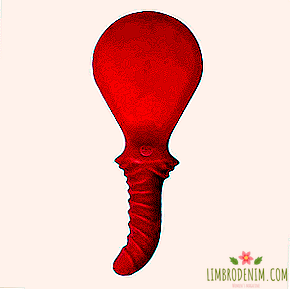Ice and flame: whether temperature drops are dangerous for the body
It is considered to be useful to go to the bath, and a contrast shower helps to “harden” the immunity - but at the same time it is said that an unprepared person dive into cold water can provoke a heart attack. We tried to figure out what science says about the dangers and benefits of temperature drops for the body — does a bath really “detoxify”, is it helpful to leave to “warm up” from winter to summer, and whether food at contrasting temperatures can be harmful.

Cold and hot shower
Soul with alternating changes in water temperature (from hot to cold and back) is often attributed to magical properties: it must strengthen the immune system, train muscles and even regulate the endocrine system. A couple of years ago, in the Netherlands, a study was conducted with the participation of three thousand people who in the morning took either a familiar shower or a contrasting shower. It turned out that the number of days when people were ill (mostly colds) was the same in all groups, but those who took a douche had 29% less work because they transferred viral infections much easier. By the way, the timing of the study coincided with the flu epidemic in Holland.
According to the authors of the study, the mechanisms of this effect are not yet clear - but it is not connected with the “strengthening” of immunity; It turned out that the cold simultaneously causes reactions that enhance and suppress the immune function. Possible explanations include psychological expectations (a placebo effect, when a person is confident in recovery with a contrast shower) and an improvement in overall fitness. A 29% reduction in absenteeism is comparable to the effect of physical exertion: people who trained regularly were 35% less on sick leave than those who did not play sports and did not take a contrast shower.
The general condition due to temperature contrasts is improved because the cardiovascular system is trained: under the influence of cold, the surface vessels narrow to protect the body from heat loss. In the heat, on the contrary, there is an expansion of blood vessels close to the surface of the body, this avoids overheating. As with any other training, these should be accustomed to the body gradually, starting with mild temperatures and short intervals.
Bath and cold water
With scientific evidence of the benefits of a bath, everything is not so simple: on the one hand, saunas and baths are associated with a healthy lifestyle, and a couple of years ago in another study confirmed that their regular visits correlate with a decrease in the risk of heart disease and even mortality. On the other hand, the official commentary on these results states that people at risk of cardiovascular complications may experience unpleasant sensations in the bath, as a result of which they simply refuse to visit it.
In another review, it is said that the research most often involves people who are used to going to the bathhouse since childhood, and there are no control groups. While most of the data indicates that for a healthy person, baths and saunas do not pose a particular risk and are even useful in terms of improving the overall shape; in the bath, you can walk and with normal pregnancy. But people with diseases of the heart and blood vessels should be careful. By the way, the elimination of toxins with a sweat is nothing more than a myth: only an insignificant amount of harmful substances can escape through the pores, and the kidneys and the liver cope with detoxification of the body.
As for the sharp immersion in cold water or a snowdrift immediately after the steam room - the scientists insist that it is life threatening. This also applies to diving on the beach at the beginning of the summer season, when the air is already warm and the water remains cold. In such a situation, two opposing reactions can develop in the body: cold shock, which makes the heart beat faster, and the response to diving - on the contrary, it slows down the heartbeat, trying to save oxygen. As a result of the conflict of these reactions arrhythmia occurs, incompatible with life. Therefore, it is very important to enter cold water gradually, allowing the body to adapt.

Traveling from winter to summer
Of course, long winter tires - not only cold, but also the need to wear closed clothes, and lack of sunlight. Traffic jams due to snow become worse, and in public transport closely because of voluminous jackets - in general, solid reasons to fly on vacation to where it is hot and sunny. To recharge your batteries and relax without putting yourself at risk, you need to remember a few simple rules.
The main risks of traveling from winter to summer are overheating from unaccustomed and sunburn. Often we promise ourselves to conduct the most healthy lifestyle on a trip, but on the very first day after arrival it is better not to start running or playing tennis: the heat itself is quite stressful for the body and it is better to first get used to the high temperature. Experts recommend drinking plenty of fluids and relaxing, and athletes - to prepare for training in the heat in advance.
Perhaps the main risk of exposure to the sun is melanoma, the likelihood of which increases after each sunburn. At the same time, it is temporary and intensive exposure - for example, during the winter holidays in a hot country - much more dangerous in terms of melanoma than living in a sunny climate. The prevalence of the disease in Russia is growing, and this is due not least to the winter trips to hot countries. You should not refuse from vacation, but sunscreens should be the main means of personal care on a trip.
Ice cream with hot drinks
An abrupt change in temperature has virtually no effect on tooth enamel - the hardest tissue in the human body, but it can significantly affect other tissues. Dentin is located under the enamel - a material consisting of microscopic tubes that connects the tooth pulp (the so-called nerve) with the external environment. If the dentin is not fully protected by enamel, but is slightly opened (for example, due to caries, the enamel is thinning as a result of too active cleaning, the neck of the tooth is exposed), the pulp will react to temperature changes with pain.
Determine the cause of hypersensitivity and choose the treatment should be a dentist. Contrasts like hot coffee with icy water should be avoided by those who wear braces: the cement for fixing expands and contracts with a sharp change in temperature and the bracket can simply peel off.
Photo: Vera Kuttelvaserova - stock.adobe.com, Hellen Sergeyeva - stock.adobe.com, Magdalena - stock.adobe.com





